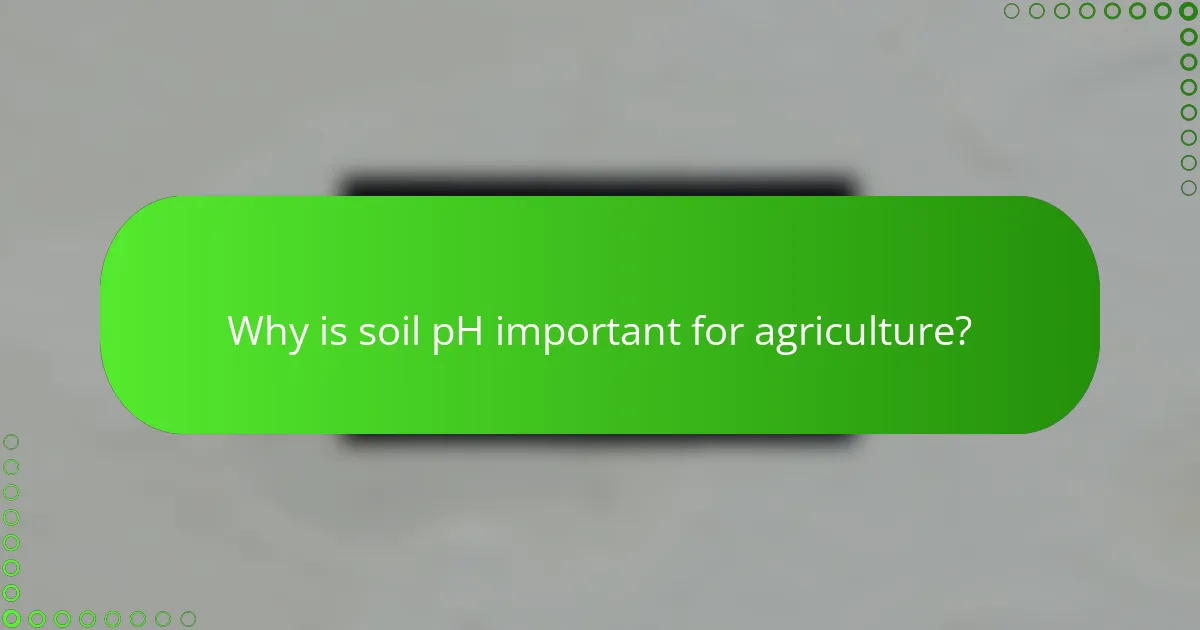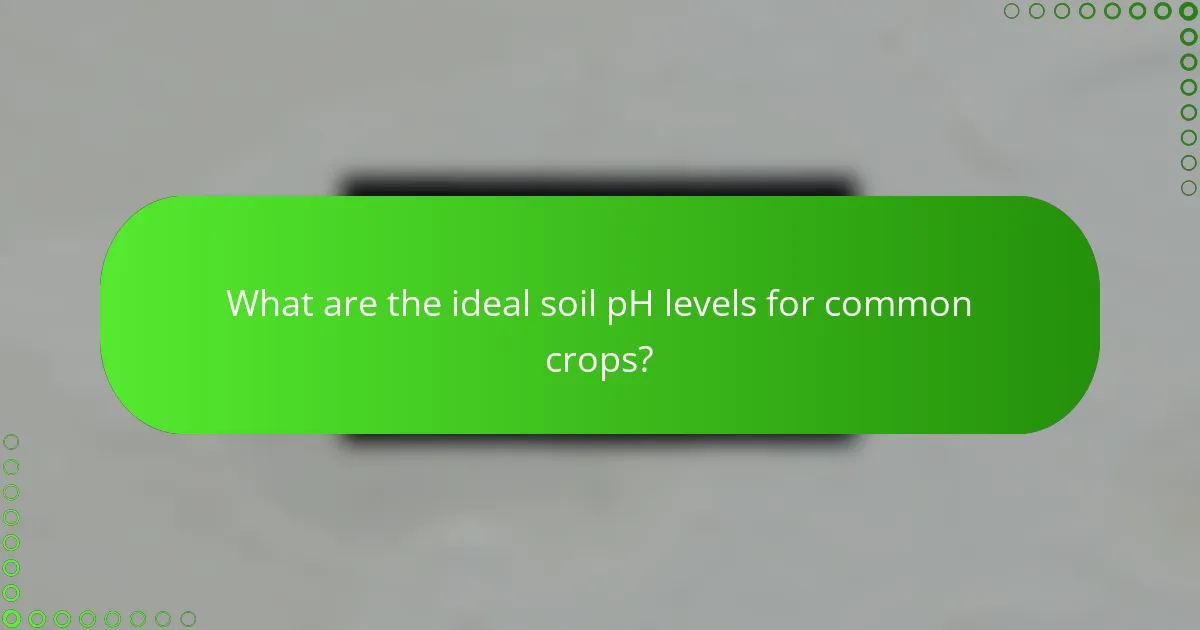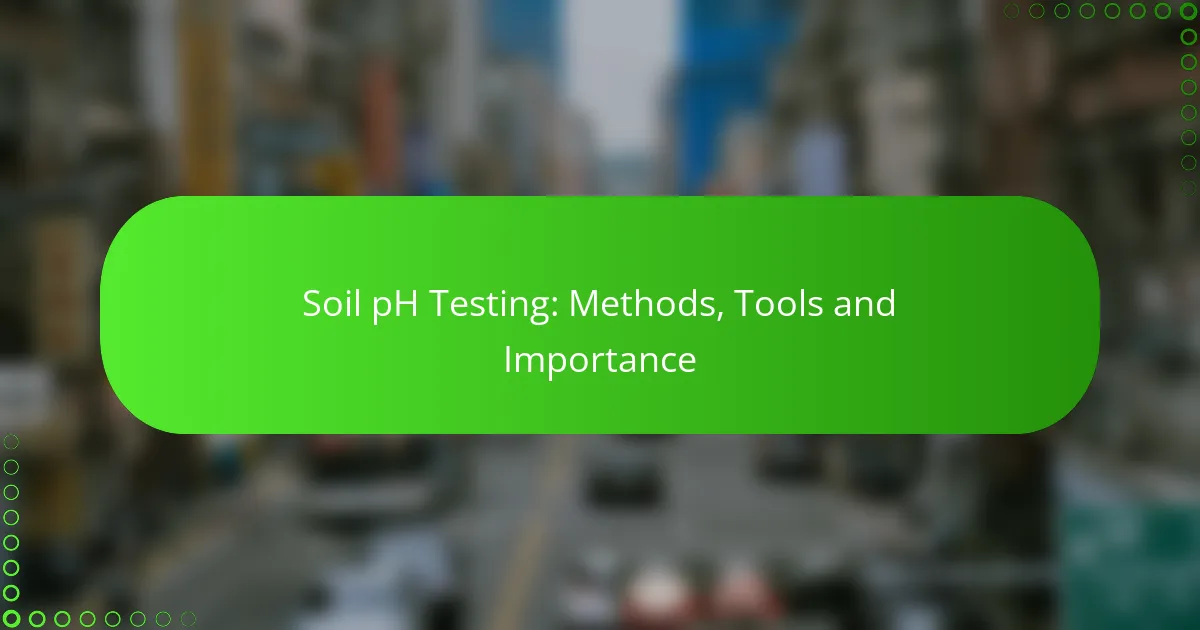Soil pH testing is essential for understanding the acidity or alkalinity of your soil, which significantly impacts plant health and agricultural productivity. Various methods, including pH meters, test strips, and DIY techniques, can be employed to assess soil pH effectively. Choosing the appropriate tool based on accuracy and budget is vital for achieving optimal results in crop cultivation.

How to test soil pH in South Africa?
To test soil pH in South Africa, you can use various methods including soil pH meters, pH test strips, or simple DIY techniques. Each method has its own advantages and can provide insights into the acidity or alkalinity of your soil, which is crucial for optimal plant growth.
Using a soil pH meter
A soil pH meter is a precise tool that measures the acidity or alkalinity of soil directly. To use it, insert the probe into moist soil and wait for the reading to stabilize, usually within a few seconds. These meters can be found at garden centers and are often battery-operated for convenience.
When selecting a soil pH meter, look for one that is easy to calibrate and has a clear display. Regular calibration with standard solutions is essential for accurate readings. Meters typically range from affordable options to more advanced models, with prices varying accordingly.
Using pH test strips
pH test strips are a simple and cost-effective way to gauge soil pH. To use them, mix a small amount of soil with distilled water, dip the strip into the solution, and compare the resulting color to the provided scale. This method is quick and can give you a general idea of your soil’s pH level.
While pH test strips are less precise than meters, they are portable and require no batteries. They are suitable for home gardeners looking for a quick check. Ensure you store the strips in a cool, dry place to maintain their effectiveness.
Using a DIY vinegar and baking soda method
The DIY vinegar and baking soda method offers a fun and educational way to test soil pH at home. To perform this test, take a small sample of soil and divide it into two containers. Add vinegar to one sample; if it fizzes, your soil is alkaline. In the other sample, add baking soda mixed with water; if it fizzes, your soil is acidic.
This method won’t provide precise pH values but can indicate whether your soil is more acidic or alkaline. It’s a great starting point for gardeners and can help you decide if further testing is necessary. Remember, this is a qualitative test, so use it as a preliminary step before investing in more accurate testing methods.

What tools are best for soil pH testing?
The best tools for soil pH testing include pH meters, test kits, and test strips, each offering different levels of accuracy and ease of use. Selecting the right tool depends on your specific needs, such as the precision required and the budget available.
Hanna Instruments pH meter
The Hanna Instruments pH meter is a reliable option for accurate soil pH measurements. It features a digital display and provides quick readings, making it suitable for both professionals and hobbyists.
When using a pH meter, ensure the electrode is properly calibrated before testing. Regular maintenance, such as cleaning the electrode and storing it correctly, will enhance its longevity and accuracy.
LaMotte Soil pH Test Kit
The LaMotte Soil pH Test Kit is a comprehensive solution for those who prefer a hands-on approach. This kit includes reagents and a color chart for determining pH levels, allowing for a visual assessment.
To use the kit, mix soil samples with the provided solutions and compare the resulting color to the chart. This method is generally reliable but may require more time and effort than digital meters.
Soil pH Test Strips by Soil Savvy
Soil pH Test Strips by Soil Savvy offer a quick and easy way to gauge soil acidity. These strips change color based on the pH level of the soil, providing immediate results.
Simply moisten the strip with soil extract and wait for the color change. While convenient, test strips may not provide the same level of precision as meters or kits, making them best for quick assessments rather than detailed analysis.

Why is soil pH important for agriculture?
Soil pH is crucial for agriculture as it directly influences nutrient availability, microbial activity, and crop suitability. Maintaining the right pH level ensures optimal plant growth and maximizes agricultural productivity.
Affects nutrient availability
The pH level of soil affects how well plants can access essential nutrients. Most nutrients are readily available to plants when soil pH is between 6.0 and 7.5. Outside this range, certain nutrients may become deficient or toxic, impacting plant health.
For example, phosphorus is less available in acidic soils (pH below 6.0), while micronutrients like iron can become overly abundant in highly acidic conditions. Regular soil testing can help farmers adjust pH levels to optimize nutrient availability.
Influences soil microbial activity
Soil pH plays a significant role in the activity of soil microorganisms, which are vital for nutrient cycling and organic matter decomposition. Most beneficial microbes thrive in a neutral to slightly acidic pH range, typically between 6.0 and 7.0.
When soil pH deviates from this range, microbial populations can decline, leading to slower decomposition rates and reduced nutrient availability. Farmers should monitor pH levels to support a healthy microbial ecosystem that enhances soil fertility.
Determines crop suitability
Different crops have varying pH preferences, making soil pH a key factor in determining crop suitability. For instance, crops like blueberries thrive in acidic soils (pH 4.5 to 5.5), while others like asparagus prefer more alkaline conditions (pH 7.0 to 8.0).
Understanding the pH requirements of specific crops allows farmers to select the right plants for their soil conditions, improving yield potential. Soil amendments, such as lime or sulfur, can be used to adjust pH levels to better match crop needs.

What are the ideal soil pH levels for common crops?
The ideal soil pH levels vary by crop type, influencing nutrient availability and overall plant health. Generally, most crops thrive within a specific pH range, which can be crucial for successful cultivation.
Vegetables: 6.0 to 7.0
Vegetables typically prefer a soil pH between 6.0 and 7.0, which allows for optimal nutrient uptake. This range supports the growth of essential nutrients like nitrogen, phosphorus, and potassium, which are vital for healthy vegetable development.
Common vegetables such as tomatoes, carrots, and lettuce flourish in this pH range. Regular soil testing can help ensure that the pH remains within these levels, as fluctuations can lead to nutrient deficiencies or toxicities.
Fruits: 6.0 to 6.8
Fruits generally thrive in slightly more acidic soils, with an ideal pH range of 6.0 to 6.8. This pH level promotes the availability of micronutrients like iron and manganese, which are crucial for fruit quality and yield.
For instance, strawberries and blueberries perform best within this range. Maintaining the right pH is essential for maximizing fruit production and preventing issues such as poor fruit set or flavor deficiencies.
Cereals: 5.5 to 7.0
Cereal crops can adapt to a broader pH range of 5.5 to 7.0, but they generally prefer slightly acidic to neutral soils. This flexibility allows cereals like wheat, barley, and corn to grow effectively across various soil types.
However, soil pH below 5.5 can hinder growth by limiting nutrient availability and increasing aluminum toxicity. Regular monitoring and amendments, such as lime, can help maintain optimal pH levels for cereal production.

What factors influence soil pH?
Soil pH is influenced by various factors including soil composition, climate conditions, and farming practices. Understanding these elements is crucial for managing soil health and optimizing crop production.
Soil composition
The mineral content and organic matter in soil significantly affect its pH level. Soils rich in clay tend to have higher pH stability, while sandy soils may show more variability. Additionally, the presence of certain minerals, such as calcium carbonate, can raise pH, making the soil more alkaline.
Organic matter, such as decomposed plant material, can lower pH by releasing organic acids. Regular testing can help determine the specific composition and its impact on soil acidity or alkalinity.
Climate conditions
Climate plays a vital role in soil pH through factors like rainfall and temperature. Areas with heavy rainfall can experience leaching, where essential nutrients are washed away, often leading to increased acidity. Conversely, arid regions may have higher pH levels due to evaporation and mineral accumulation.
Temperature also affects microbial activity, which can influence organic matter decomposition and subsequent pH changes. Understanding local climate patterns can help predict soil pH fluctuations over time.
Farming practices
Farming practices directly impact soil pH through the use of fertilizers, crop rotation, and soil amendments. For instance, the application of ammonium-based fertilizers can lower pH, while lime is commonly used to raise it. Regular soil testing is essential to adjust these practices effectively.
Crop rotation can also influence pH by altering the organic matter content and nutrient cycling. Sustainable practices, such as cover cropping, can help maintain balanced pH levels and enhance soil health over the long term.

How often should soil pH be tested?
Soil pH should be tested at least once every few years, but more frequent testing is advisable for high-value crops or specific gardening projects. Regular testing helps maintain optimal soil conditions for plant growth, ensuring nutrient availability and preventing issues related to acidity or alkalinity.
Factors influencing testing frequency
The frequency of soil pH testing depends on several factors, including soil type, crop requirements, and local climate conditions. Sandy soils may require more frequent testing due to their lower nutrient retention, while clay soils might hold pH levels more consistently.
Additionally, if you are growing sensitive plants or making significant amendments to the soil, such as adding lime or sulfur, testing should be done more often to monitor changes. A general guideline is to test every 1-3 years for most home gardens.
Best times to test soil pH
The best times to test soil pH are during the fall or spring when the soil is moist but not saturated. Testing in these seasons allows for accurate readings and provides time to make necessary amendments before planting. Avoid testing during extreme weather conditions, such as drought or heavy rain, as these can skew results.
For farmers, testing before planting and after harvest can help adjust soil conditions for the next crop cycle, ensuring optimal growth conditions year-round.
Methods for testing soil pH
Soil pH can be tested using several methods, including DIY kits, pH meters, or sending samples to a laboratory. DIY kits are convenient and cost-effective for home gardeners, while pH meters offer more precise measurements but require calibration and maintenance.
Laboratory testing is the most accurate method and is recommended for large-scale farming or when precise pH levels are critical. Each method has its pros and cons, so choose one that fits your needs and budget.










